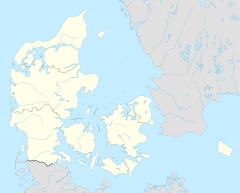| Bygholm | |
|---|---|
 Bygholm viewed from the park | |
| General information | |
| Architectural style | Baroque |
| Location | Horsens Municipality |
| Country | Denmark |
| Coordinates | 55°51′53″N09°49′32″E / 55.86472°N 9.82556°E |
| Completed | 1775 |
Bygholm Castle is a former royal castle and manor house located just south of Horsens, Denmark. It traces its history back to 1313 but the current Baroque buildings date from 1775. Owned by Horsens Municipality, the main building is now run as a hotel while the associated land is a public park and used as fair grounds.

